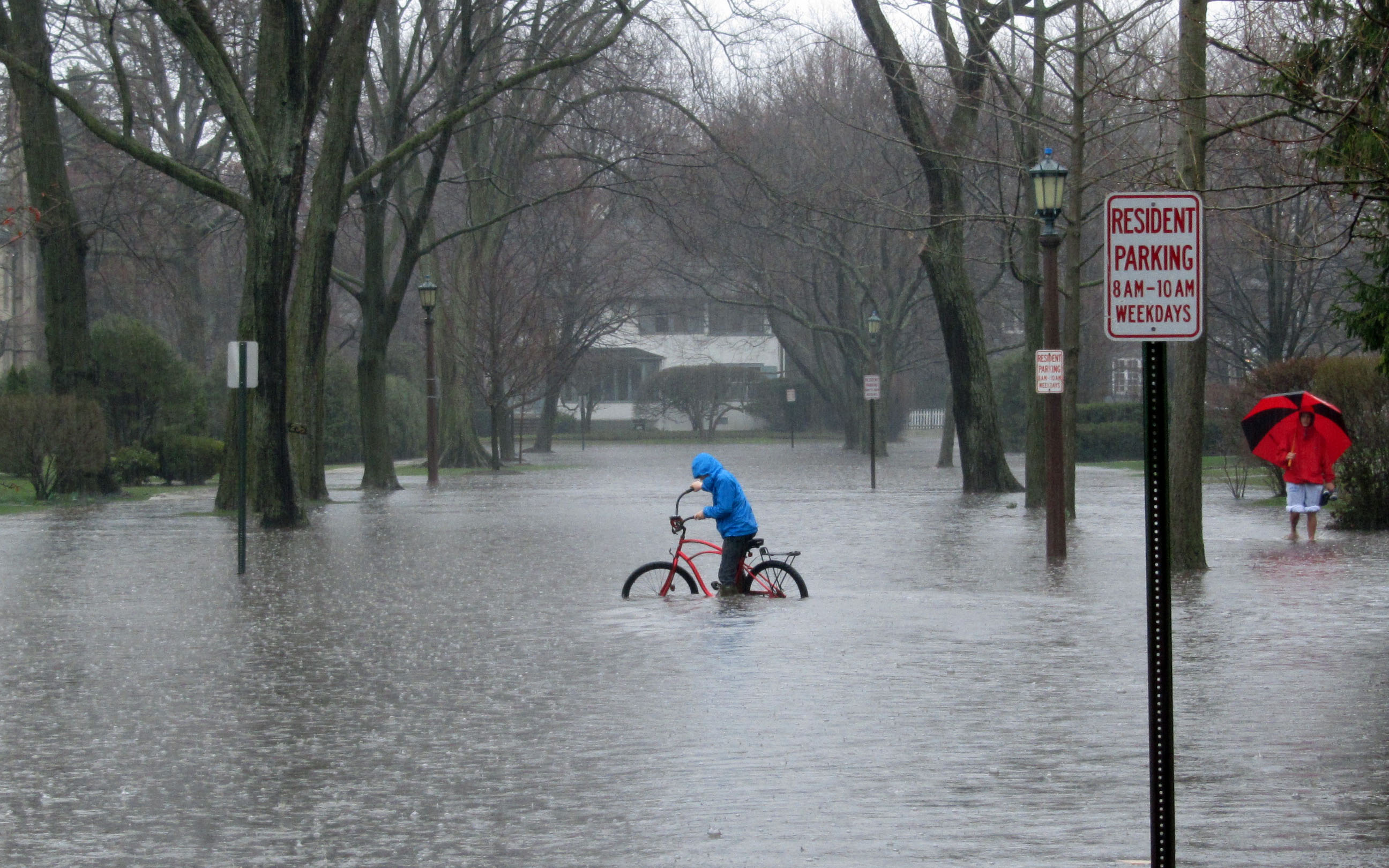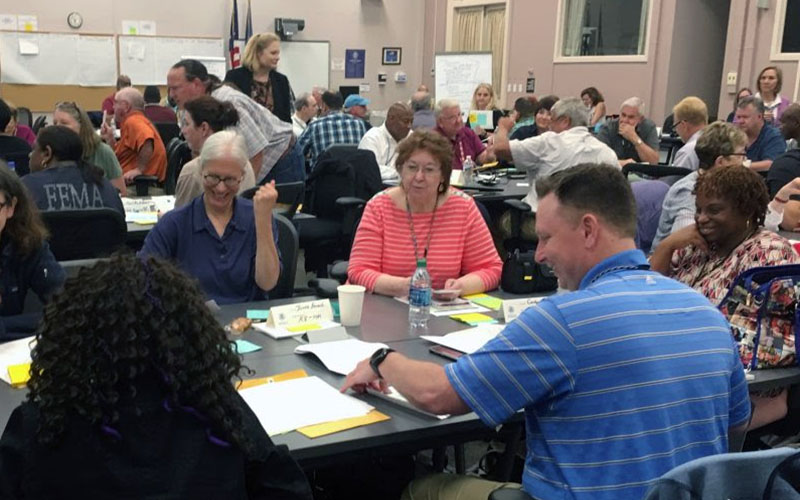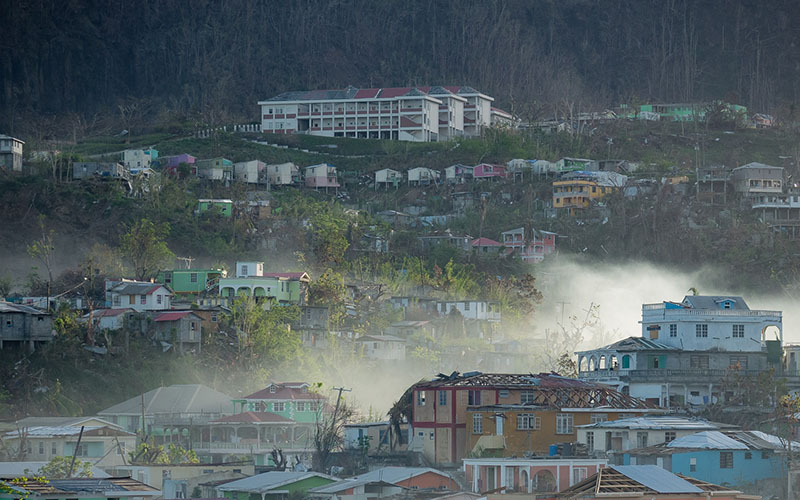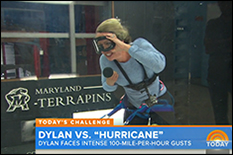News Story
Nationwide Urban Flooding Disrupts Local Economies, Public Safety, and Housing Equity

Photo by Village of Kenilworth, Illinois
Flooding caused by an increasing number of intense rainfall events is a national challenge and significant source of economic loss, social disruption, and housing inequality across the United States, says a new report from the University of Maryland (UMD) and Texas A&M University (TAMU).
The first to assess the national scope and consequences of urban flooding, the report calls on the administration and Congress to bring together representatives from state, municipal, and tribal governments, nongovernmental organizations, and the public to define responsibilities and implement a variety of actions at the local level.
The recommendation is one of nine presented in the report to help governments at all levels take control of the growing threat.
Texas A&M University System Chancellor John Sharp said researchers have discovered major threats and troubling trends that need to be addressed.
“Most Americans will be surprised to learn that much of the country’s urban flooding occurs outside traditional 100-year floodplains,” said Sharp, who was chosen to head the Governor's Commission to Rebuild Texas after Hurricane Harvey. “The work by the Texas A&M System and the University of Maryland is another example of how research universities serve the public good. Only by understanding the problem can we find the solutions.”
Gerry Galloway, Glenn L. Martin Institute Professor of Engineering with UMD’s Center for Disaster Resilience, added that urban flooding is a more prevalent problem than many people have thought.
Urban flooding has historically been thought of as something that occurs in only a handful of major cities, Galloway said.
“This report affirms that communities across the country are in fact facing similar—and escalating—challenges and that the principal responsibility for addressing the issue rests with local governments where their unique issues can be addressed,” he said.
Urban flooding occurs when rainfall runoff exceeds what the landscape can absorb or the drainage system can move. As communities convert more land into roads, buildings, and other impervious surfaces, drainage systems—themselves often aging, undersized, and difficult to maintain—reach capacity faster, leaving flood waters to devastate homes and businesses.
“The frequency of these events erodes the economic stability, health, and safety of a community over time. And the impacts can be felt miles from a stream channel or water body,” said Sam Brody, director of the Center for Texas Beaches and Shores.
To characterize the extent and impacts of urban flooding in the United States, UMD’s Center for Disaster Resilience and the Center for Texas Beaches and Shores at the TAMU Galveston Campus surveyed stormwater and floodplain management practitioners with knowledge of more than 350 communities in 48 states. The survey was also supplemented by multiple discussions with government agency and professional organization focus groups.
The survey revealed that:
-
83 percent of the 388 question respondents indicated they had experienced urban flooding in their community
-
46 percent of the 325 question respondents indicated that urban flooding has occurred in numerous or most areas
-
85 percent of the 296 question respondents had experienced urban flooding outside the Special Flood Hazard Area
-
51 percent of the 325 communities represented by question respondents had been affected by moderate or larger urban floods
“The message of this pioneering study is that we cannot wait for someone else to fix this worsening problem,” said University of Maryland President Wallace D. Loh. “Cooperation between communities, local governments, and universities can help begin the process of adapting to the new realities of urban flooding.”
The research team confirmed the survey responses with a detailed spatial analysis of federal flood-related data and information collected by state and nonprofit groups. While no single agency tracks urban flooding directly, the team found over 3,600 events in the National Oceanic and Atmospheric Administration’s flood loss database from 1993 to 2017 indicating severe rainfall flooding.
The team also discovered that over 25 percent of National Flood Insurance Program claims filed in 1972-2014 were submitted for properties outside the 100-year flood zone—in some neighborhoods, all flood impacts occurred well outside of these boundaries. Overall, the results suggest the much of the damage incurred over the last several decades was caused by overwhelmed drainage systems and the alteration of natural drainage patterns through development.
“As we have witnessed for ourselves here in Texas, urban flooding is a serious threat to lives, property, and economic and infrastructure development,” Texas A&M University President Michael K. Young said. “This unprecedented study is a wake-up call for the entire nation that urban flooding is a growing and dangerous problem, but likewise enormously powerful and exceptionally useful as it outlines feasible remedial approaches and solutions.”
Despite the growing extent of the threat, Galloway, Brody, and their collaborators report that many municipal governments have been unable to dedicate the resources needed to mitigate urban flooding. At the federal level, no single agency is responsible for overseeing or supporting local activities.
“Management and oversight activities related to urban flooding are scattered throughout governance levels and agencies,” Galloway said. “This creates overlaps in responsibility in some cases, gaps in others, and generally curbs progress toward effective management.
“It is also apparent that many people who live and work in flood-prone urban areas don’t know the risks,” he added.
To move the policy needle on urban flooding mitigation, the report team recommends that governors, tribal leaders, and regional and municipal officials review current oversight responsibilities in their jurisdictions as well as the provisions for flood water, wastewater, and stormwater management. They also urge states to integrate urban flood risk communication, mapping, and disclosure measures into real estate transactions.
Congress, the administration, and federal agencies, the report says, must take strategic steps to support locally led mitigation efforts. For example, the administration should establish a risk identification grant program and federal agencies should integrate urban flood risk communication into existing programs for riverine and coastal flooding. Galloway, Brody, and their team also recommend that the administration and Congress tap a single federal agency to provide oversight of federal mitigation support while the forum of national stakeholders is stood up.
“And at every level of government, officials need to take steps to ensure that efforts to combat the impacts of urban flooding reaches the communities and neighborhoods at the highest risk, regardless of their socioeconomic or geographic characteristics,” Brody said.
This study was completed through financial support from the Hagler Institute for Advanced Studies at TAMU and the A. James Clark School of Engineering at UMD.
The full report, as well as the survey questions and responses, is available for download at go.umd.edu/urban-flooding. To access report maps developed TAMU’s Center for Texas Beaches and Shores, visit go.umd.edu/urban-flooding-maps.
Published November 28, 2018















